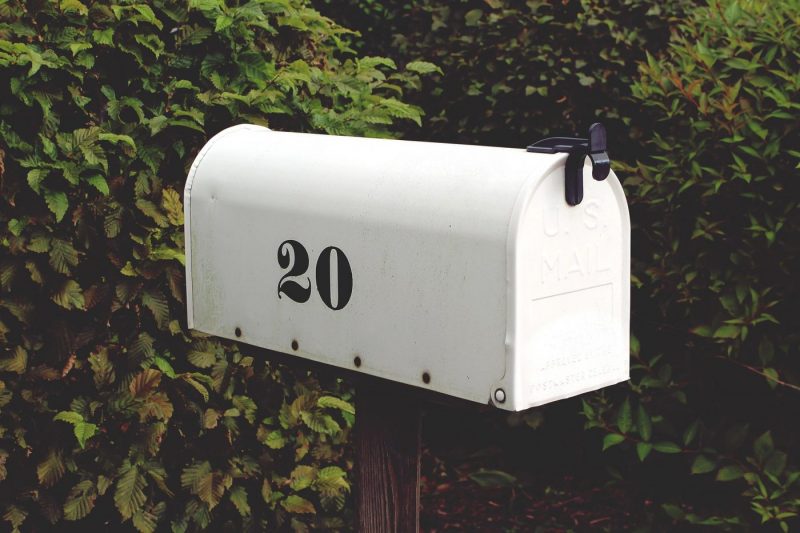The arrival of messages that do not really add value is a constant in our email inbox. For this reason, when you start working on sending your newsletter, it is essential that you dedicate some time in advance to its planning. A few days ago, we shared with you the first part of our post “The strategy and organisation of a B2B newsletter”, where we defined the bases to clarify the steps that must be taken before starting to send your newsletter.
Now, in this second article we want to tackle the structure of the newsletter by reviewing all the elements that shouldn’t be missing in its composition. This is the way of working that we have developed at HelloMrLead and we have proved that it works to provide truly distinctive content. We hope that with these simple tips you will also achieve your goals. Will you join us?
Create the editorial calendar for your newsletter
In order to be able to schedule the mailings and ensure that they are coherent with each other, organisation is essential. You can design a table in which you include the essential data that will help you to develop the rest of the content. In this context, you should include the sending date to maintain the frequency, the subject of the email and the title, which should try to transmit the values that you have previously defined, as well as the subject of the posts or the lead magnets that we want to send to the databases. We recommend that your calendar includes, at least, three months and that you take into account important dates such as Christmas, Easter or public holidays in each city.
Segment your databases
We already mentioned that when composing the newsletter, one of the steps that we should not forget was to define our databases according to the characteristics of the company, its size and the territory in which it operates. We made a classification in which we differentiated between former clients, potential national clients and potential international clients.
Segmenting a database is essential for a campaign to be effective, as it helps to identify the clients and sector you are targeting, to detect which sections react more positively to mailing and which messages generate more interaction. When carrying out this action, it is important to consider geographic and demographic information, the functions performed by each person in their job or the quality of the information you have available.
The tools that can be used to carry out this action are very varied and some of the names that you will hear the most are Sales Navigator, Findthatlead, Snovio, uProc, y skrapp.io. We would like to highlight these last two as they are the most used by HelloMrLead’s Lead Prospecting team. With uProc it is possible to extract the corporate emails, which is very useful for outbound and enriching the databases. Its main advantage is its optimisation as it is able to work in an automated way without previous programming and reducing the time that a worker would have to spend searching field by field. Skrapp.io, on the other hand, works in a similar way to the previous one, with the difference that it is a Google Chrome extension.
Choose your tools
Before going any further, it is important that you select some of the tools you will work with to build the launch of your newsletter. At this point you will have to take into account some of the following elements:
- Platform you will work with: there is a wide variety so you can choose the one that best suits your needs. At HelloMrLead we highlight Sendinblue, Benchmark and Moonsend.
- Email address from which you will send you mailings: it is important that it is corporate and must always be the same so that your contacts recognise it and it transmits trust.
Define the structure of your newsletter
Now it is time to define the structure of your newsletter. As we have already highlighted, it is important that all your mailings have a coherence so that with a simple look the reader is able to identify the sender. Here, the design and visual appearance play an essential role in making the newsletter a coherent extension of your brand. When defining your structure, do not forget to include the following 5 elements:
Masthead:
It is your identity sign because it is the first thing that the person who opens the email will see. It must always be the same and it can include an image with the company logo.
Typography and brand image:
It must always be the same so that it is recognisable and it is important that it is as similar as possible to the aesthetics you maintain to your web page, social networks and the rest of your audiovisual content. The colours you use are also important to act as a corporate element by respecting your visual identity.
Visual elements:
Nowadays it is really simple to obtain professional photographs thanks to the image banks we have at our disposition. However, it is not enough to include a photo as we find it. First of all, it is advisable that all the visual elements have a harmony, and also that each of the images is optimised according to criteria such as its dimensions, its size and weight, the file name or the ALT attribute.
Text:
The written content must be created in the right measure without overloading the space. In this context, it must be able to include the key words and transmit the main ideas, as well as the objectives proposed in the first phase of the definition of the structure. In order to expand it, it is possible to include buttons with links to “read more” in the case of posts or “download” for lead magnet. Also, do not forget that the way you write must also be in tune with the rest of your communications.
Unsubscribe link:
When we send a mailing we never want to lose subscribers. However, it is essential that all the newsletter contain the option in a simple and convenient way, which in addition to being in line with the legislation provides confidence.
Analyse your results
If you have reached this point, it means that you have successfully sent your newsletter and now it is time to analyse the results obtained. As we explained in the first part of this post, which you can consult in our blog, the definition of metrics, KPI’s and goals will help you to check if you have achieved your objectives. The tool you use to launch the mailing provides you with some important data such as the number of recipients who have received your mailing, which will give you an answer to the quality of your database, the number of people who have opened the message and how many have decided to click on the newsletter. It is also possible to see how many subscribers have decided to unsubscribe.
When carrying out this analysis, we can also check which device -mobile, desktop or tablet- our readers tend to use and find out if this conditions my strategy in order to act accordingly. This data, far from being insubstantial information, is the key to see which messages attract more attention, which content is better received and where people go once they click on any part of the content, which we can use when planning the next mailings.
We have a present for you!
You are now ready to set up the strategy and organisation of your B2B newsletter. And that’s not all. If you give us your email address in the comments of this post, we will send you a free checklist for a perfect B2B newsletter.
Did you find this post interesting? If you want to know more, you can read the first part of this post for a more complete overview or read our article “Define your metrics, KPIs and objectives” to learn more about this topic. Show the world all your potential by putting this series of tips into practice and, if you want us to help you, do not hesitate to contact us through our website.





